
|
Astronomy Picture Of the Day (APOD)
 NGC 7635: The Bubble Nebula
NGC 7635: The Bubble Nebula
17.01.2000
What created this huge space bubble? A massive star that is not only bright and blue, but also emitting a fast stellar wind of ionized gas. The Bubble Nebula is actually the smallest...
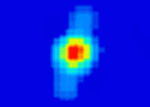 V4641 Sgr: The Closest Black Hole Candidate
V4641 Sgr: The Closest Black Hole Candidate
16.01.2000
An object many astronomers believe is a black hole has been found only 1500 light-years from Earth, making it the closest black hole candidate. Although dramatic explosions emanate from the object, it is far enough away so that we are in no danger.
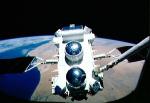 The Compton Gamma Ray Observatory
The Compton Gamma Ray Observatory
15.01.2000
The Compton Gamma Ray Observatory (CGRO) was the most massive instrument ever launched by a NASA Space Shuttle in 1991 and continues to revolutionize gamma-ray astronomy. Before Compton loses more stabilizing gyroscopes, NASA is considering firing onboard rockets to bring it on a controlled reentry into the ocean.
 The Sun Also Rises
The Sun Also Rises
14.01.2000
Sunrise seen from low Earth orbit can be very dramatic indeed (and the authors don't apologize to Hemingway for using his title!). In this breathtaking view from the space shuttle Endeavor, the Sun is just visible peaking over towering anvil-shaped storm clouds.
 Chandra Resolves the Hard X Ray Background
Chandra Resolves the Hard X Ray Background
13.01.2000
It is everywhere but nobody knew why. In every direction at all times, the sky glows in X-rays. The X-ray background phenomenon was discovered over 35 years ago, soon after the first X-ray satellites were launched, and has since gone unexplained.
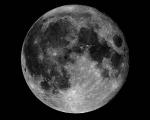 A Skygazers Full Moon
A Skygazers Full Moon
12.01.2000
This dramatically sharp picture of the full moon was recorded on 22 December, 1999 by astroimager Rob Gendler. Big, beautiful, bright, and evocative, it was the last full moon of the Y1.9Ks, pleasing and inspiring even casual skygazers.
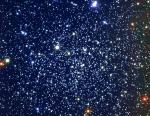 NGC 6791: An Old, Large Open Cluster
NGC 6791: An Old, Large Open Cluster
11.01.2000
NGC 6791 is one of the oldest and largest open clusters of stars known. But how did it get so dirty? Open star clusters usually contain a few hundred stars each less than a billion years old.
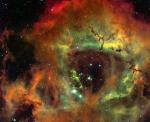 The Rosette Nebula in Hydrogen, Oxygen, and Sulfur
The Rosette Nebula in Hydrogen, Oxygen, and Sulfur
10.01.2000
The Rosette Nebula is a large emission nebula located 3000 light-years away. The great abundance of hydrogen gas gives NGC 2237 its red color in most photographs. The wind from the open cluster of stars known as NGC 2244 has cleared a hole in the nebula's center.
 Brown Sun Bubbling
Brown Sun Bubbling
9.01.2000
Our Sun may look like all soft and fluffy, but its not. Our Sun is an extremely large ball of bubbling hot gas, mostly hydrogen gas. The above picture was taken in a specific color of light emitted by hydrogen gas called Hydrogen-alpha.
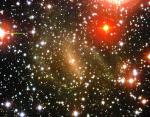 Galaxy Dwingeloo 1 Emerges
Galaxy Dwingeloo 1 Emerges
8.01.2000
Sometimes you can't see the forest for the trees. But if you look closely at the center of the above photograph, you will see a whole spiral galaxy behind the field of stars.
|
January February March April May June July August September October November December |
|||||||||||||||||||||||||||||||||||||||||||||||||